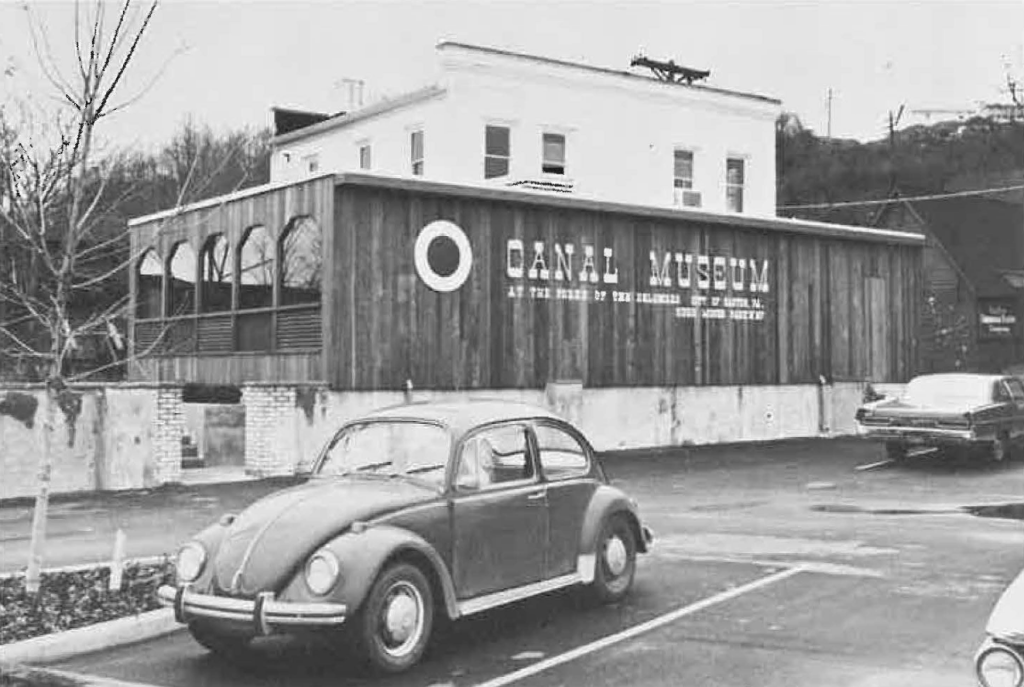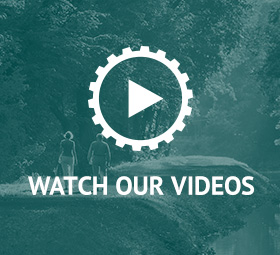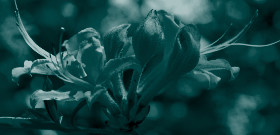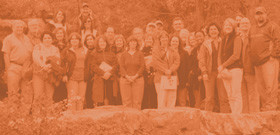The D&L Blog


When moving forward to explore new routes and opportunities, it’s important to remember where things started. Long before Delaware & Lehigh National Heritage Corridor (DLNHC) merged with the National Canal Museum in 2017, before the National Canal Museum was even located in Hugh Moore Park or in the Crayola Experience building, it was called the Canal Museum at the Forks of the Delaware.
Located as the northern terminus of the Delaware Canal at 200 South Delaware Drive, the Canal Museum was established by the Pennsylvania Canal Society and the Hugh Moore Park Commission. In 1970, the museum opened with a collection of over 3,000 items in 1970, including a large slide collection from the Grundy Foundation in Bristol, PA (the southern terminus of the Delaware Canal). Harry L. Rinker, the first director of the Hugh Moore Parkway (1968-1972) and president of the Pennsylvania Canal Society (1966-1976) personally collected/acquired approximately 95% of the material and documents in the Pennsylvania Canal Society’s collection at the time.
The MUSEUM has approximately 1,400 square feet of display area including a small theater which can accommodate fifty people. In addition, the second floor has a large library-research room where Society members are welcome to browse and use the library, slide, photograph, and document collections of the Society. (Harry L. Rinker, Canal Currents, Issue 11, Winter 1970, Pennsylvania Canal Society)
The building for the Canal Museum was acquired in collaboration with the City of Easton as part of the Hugh Moore Parkway project – an effort in which the City acquired seven and a half miles of Lehigh Coal and Navigation land to transform into a historical and recreational park development. Much of this project can be observed along the D&L Trail from Forks of the Delaware to the Route 33 Boat Launch today!
In 1984, the organization overseeing the museum became Hugh Moore Historical Park and Museums. It established an expanded board of directors and the name of the museum became simply the “Canal Museum.”
In 1996, the museum moved to Two Rivers Landing at Centre Square in downtown Easton and was renamed The National Canal Museum. Sharing the space with the Crayola Factory meant having hundreds of young visitors, so the exhibits were changed to hands-on activities that demonstrated the science that created and ran America’s 19th century canals.
The National Canal Museum’s current location, many who know the organization are familiar with, is the Emrick Technology Center in Hugh Moore Park, named for benefactors Peter and Elaine Emrick. Nestled in the heart of the Park since 2012, the museum has the benefit of being alongside the restored Lehigh Canal, offering mule-drawn boat rides aboard the Josiah White II, and the D&L Trail.
While its locations have changed over the years, the National Canal Museum’s roots have stayed the same. Every year we welcome hundreds of visitors to experience and learn about the history and science of our region’s canals. Often our welcoming volunteers and friendly staff hear our visitors tell stories of coming to the museum and riding the boat they remember from when they were young and want to share with their own children and grandchildren.
We are pleased and grateful for the continuing support of the museum
We couldn’t have done it without the groundwork laid before us by those in the PA Canal Society, Friends of the Hugh Moore Park, Hugh Moore Park Commission, and more.
If you’d like to show your support for the National Canal Museum, our new special exhibition, Putting Down Routes: From Native Trails to Interstates, opens for weekends April 6, 2024 and we would love to welcome you in.
If you’d like to do a little bit more exploring along canals, our friends at the PA Canal Society are holding a Spring Tour. This year, they will be traveling the Erie Canal Extension. You can learn more by visiting their website.
Written in collaboration between Gianna Caruso, DLNHC Communications Coordinator, and Martha Capwell Fox, DLNHC Historian with contributions from Harry L. Rinker.










